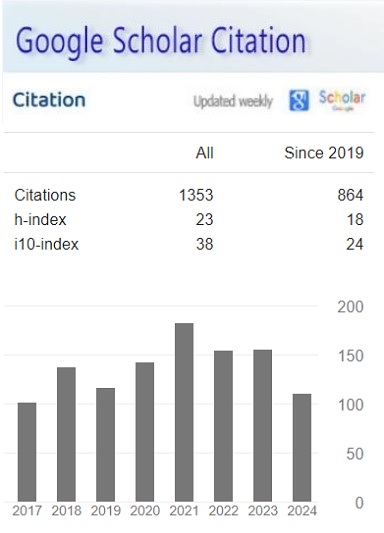Voice Recognition Systems in the Cloud Networks
Has It Reached Its Full Potential?
Keywords:
Abstract
Voice recognition software enables computer users to use keyboards instead of only entering text using their voices. The medical and legal communities have both reported some success with speech recognition technology, even though the library literature is relatively mute on voice recognition technology. Voice-recognition technology can take over typing for someone who cannot do so due to a physical disability. Voice recognition may still be in its infancy, but it is advancing quickly and becoming more accurate, and it is well worth the investment of money, time, and effort required to learn it. Speech recognition artificial intelligence apps have seen a significant increase in numbers in recent years. Businesses increasingly rely on digital assistance and automated support to rationalize their offerings. Voice assistants, intelligent home appliances, search portals, and similar technologies are only a few instances of the widespread use of voice recognition. The research investigates the theory that one of the primary benefits of using a speech recognition system is th.at it enables the user to continue working on other tasks simultaneously. The user can direct their attention to observation and manual activities while maintaining control of the device using voice input commands. In addition, the study's findings indicate that voice recognition is an additional type of speech recognition in which a source sound is identified and matched to an individual's voice. For instance, Apple's Siri and Google's Alexa use AI-mechanized voice recognition to provide speech or text back support. On the other hand, voice-to-text programs such as Google Dictation translate words that are dictated to them as text.
References
Bland, Z. L. (2000). Teaching Voice Recognition Systems: Strategies for Success. Delta Pi Epsilon Journal, 42(4), 212.
Douglas, W., & Gibbins, K. (1983). Inadequacy of voice recognition as a demonstration of self-deception. Journal of Personality and Social Psychology, 44(3), 589-592. DOI: https://doi.org/10.1037/0022-3514.44.3.589
Freeh, M., Dewey, M., & Brigham, L. (2001). Evaluating a voice recognition system: finding the right product for your department. Journal of Digital Imaging, 14(2), 6-8. DOI: https://doi.org/10.1007/BF03190285
Gutlapalli, S. S. (2016). An Examination of Nanotechnology’s Role as an Integral Part of Electronics. ABC Research Alert, 4(3), 21–27. https://doi.org/10.18034/ra.v4i3.651 DOI: https://doi.org/10.18034/ra.v4i3.651
Gutlapalli, S. S. (2017a). Analysis of Multimodal Data Using Deep Learning and Machine Learning. Asian Journal of Humanity, Art and Literature, 4(2), 171–176. https://doi.org/10.18034/ajhal.v4i2.658 DOI: https://doi.org/10.18034/ajhal.v4i2.658
Gutlapalli, S. S. (2017b). The Role of Deep Learning in the Fourth Industrial Revolution: A Digital Transformation Approach. Asian Accounting and Auditing Advancement, 8(1), 52–56. Retrieved from https://4ajournal.com/article/view/77
Lange, H. R. (1990). Voice recognition and voice response: a report on tomorrow's technologies. National Online Meeting 1990.Proceedings of the Eleventh National Online Meeting, New York, 1-3 May 1990 Edited by Martha E.Wliams, Medford, New Jersey, Learned Information, Inc., 1990 233-240.
Mandapuram, M. (2016). Applications of Blockchain and Distributed Ledger Technology (DLT) in Commercial Settings. Asian Accounting and Auditing Advancement, 7(1), 50–57. Retrieved from https://4ajournal.com/article/view/76
Mandapuram, M. (2017a). Application of Artificial Intelligence in Contemporary Business: An Analysis for Content Management System Optimization. Asian Business Review, 7(3), 117–122. https://doi.org/10.18034/abr.v7i3.650 DOI: https://doi.org/10.18034/abr.v7i3.650
Mandapuram, M. (2017b). Security Risk Analysis of the Internet of Things: An Early Cautionary Scan. ABC Research Alert, 5(3), 49–55. https://doi.org/10.18034/ra.v5i3.650 DOI: https://doi.org/10.18034/ra.v5i3.650
Mandapuram, M., & Hosen, M. F. (2018). The Object-Oriented Database Management System versus the Relational Database Management System: A Comparison. Global Disclosure of Economics and Business, 7(2), 89–96. https://doi.org/10.18034/gdeb.v7i2.657 DOI: https://doi.org/10.18034/gdeb.v7i2.657
Mandapuram, M., Gutlapalli, S. S., Bodepudi, A., & Reddy, M. (2018). Investigating the Prospects of Generative Artificial Intelligence. Asian Journal of Humanity, Art and Literature, 5(2), 167–174. https://doi.org/10.18034/ajhal.v5i2.659 DOI: https://doi.org/10.18034/ajhal.v5i2.659
Memon, S. U., Bohra, N., Memon, K., & Maitlo, R. N. (2018). Comparative Analysis of IoT-Based Home Automation System using Android Application and Voice Recognition System. International Journal of Advanced Studies in Computers, Science and Engineering, 7(9), 1.
Migowa, A. N., Macharia, W. M., Samia, P., Tole, J., & Keter, A. K. (2018). Effect of a voice recognition system on pediatric outpatient medication errors at a tertiary healthcare facility in Kenya. Therapeutic Advances in Drug Safety, 9(9), 499-508. https://doi.org/10.1177/2042098618781520 DOI: https://doi.org/10.1177/2042098618781520
Petta, T. D., & Woloshyn, V. E. (2001). Voice Recognition for Online Literacy: Continuous Voice Recognition Technology in Adult Literacy Training. Education and Information Technologies, 6(4), 225-240. https://doi.org/10.1023/A:1012972601388 DOI: https://doi.org/10.1023/A:1012972601388
Saady, M. R., El-Borey, H., El-Dahshan, E., & Yahia, A. S. (2014). Stand-Alone Intelligent Voice Recognition System. Journal of Signal and Information Processing, 5(4), 179. DOI: https://doi.org/10.4236/jsip.2014.54019
Sackeim, H. A., & Gur, R. C. (1985). Voice recognition and the ontological status of self-deception. Journal of Personality and Social Psychology, 48(5), 1365-1372. DOI: https://doi.org/10.1037/0022-3514.48.5.1365
Schwind, G. F. (1988). Voice Data Entry: Identification By Conversation. Material Handling Management, 43(10), 44.
Suvalsky, S., & Boelman, V. (2012). Voice recognition technology vs. manual transcription: Is voice recognition technology superior to manual transcription for surgical pathology--in terms of return on investment? A formal study says the answer is no. MLO: Medical Laboratory Observer, 44(9), 36-9.
Waldrup, B. E., Michelman, J., & Person, M. L. (2000). Voice recognition software: Certified Public Accountant. The CPA Journal, 70(11), 42-51.
Williams, N. R. (2003). Voice recognition products--an occupational risk for users with ULDs? Occupational Medicine, 53(7), 452-5. DOI: https://doi.org/10.1093/occmed/kqg121
Zumalt, J. R. (2005). Voice Recognition Technology: Has It Come of Age? Information Technology and Libraries, 24(4), 180-185. DOI: https://doi.org/10.6017/ital.v24i4.3382
Thodupunori, S. R., & Gutlapalli, S. S. (2018). Overview of LeOra Software: A Statistical Tool for Decision Makers. 技术与管理回顾, 1(1), 7–11. http://技术与管理回顾.移动/index.php/tmr/article/view/4
Downloads
Published
How to Cite
Issue
Section
License
Copyright (c) 2019 Asian Journal of Applied Science and Engineering

This work is licensed under a Creative Commons Attribution-NonCommercial 4.0 International License.








